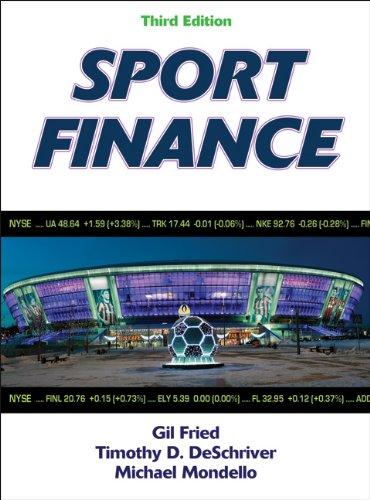Answered step by step
Verified Expert Solution
Question
1 Approved Answer
1. Would Ah Lee go by Carols view on interest rate remain unchanged for the next 3 years? Why or why not? (20 Points) (Note:



1. Would Ah Lee go by Carols view on interest rate remain unchanged for the next 3 years? Why or why not? (20 Points) (Note: I am open to what you want to discuss about the interest rate term structure over the next 3 years. Whether you agree or disagree with the view that term structure will remain the same Your interest rate view would directly affect your investment decision.)
Situation Ah Lee, a financial manager at a US based mid-sized manufacturing firm, has been caught off-guard before. In an effort to earn the most on excess cash, Ah Lee once bought five-year US Treasury bonds (a maturity longer than the firm's liabilities) only to see interest rates rise. The loss when the Treasury bonds were sold did not make Ah Lee's supervisor, Carlo, Chief Financial Officer, very happy. Ah Lee is now in a similar situation - Carlo has asked for a recommendation on the investment of another $10 million in excess cash. Risk and Return using RCY The risk of unexpected changes in interest rates is a given with coupon-paying bonds. Even if the bonds are held to maturity, there is reinvestment risk. A bond's exposure to interest rate risk depends on the size and the number of coupon payments made to the bondholder. The realized return from a bond depends on the rates at which the coupons are invested; the rates can only be estimated at the time the bond is purchased. Given estimates of futures interest rates, however, the expected realized compound yield (RCY) can be calculated in order to cope with the reinvestment problem. For a bond that pays annual coupons over n years, the appropriate calculation for the annualized return is: RCY = [(Total future dollar value/Purchase price of bond)\ - 1). The total future dollar value from the investment includes the coupon payments, the earnings on each coupon, and the value of the bond at the end of the holding period. In estimating the future dollars from a bond purchase, Ah Lee needs a forecast of the direction and level of future interest rates. At yesterday's investment meeting, Carlo stated his belief that interest rates would remain unchanged for the next three years because of an unchanging expected inflation rate. Ah Cheung, another financial manager at the firm and someone that has earned Carlo's respect for his reasoned judgment, suggests Ah Lee use the current term structure to gauge interest rate expectations. He uses the following table from Federal Reserve Statistical Release H.15 to get current spot rates on one-, two-, and three-year constant maturity Treasury securities. (See table below)/ Treasury const maturities Spot Rate Today 1-year 1.54% 1.54% 1.61% 3-year 1.61% 4-year 1.63% 5-year 5-year 7-year 1.65% 1.75% Situation Ah Lee, a financial manager at a US based mid-sized manufacturing firm, has been caught off-guard before. In an effort to earn the most on excess cash, Ah Lee once bought five-year US Treasury bonds (a maturity longer than the firm's liabilities) only to see interest rates rise. The loss when the Treasury bonds were sold did not make Ah Lee's supervisor, Carlo, Chief Financial Officer, very happy. Ah Lee is now in a similar situation - Carlo has asked for a recommendation on the investment of another $10 million in excess cash. Risk and Return using RCY The risk of unexpected changes in interest rates is a given with coupon-paying bonds. Even if the bonds are held to maturity, there is reinvestment risk. A bond's exposure to interest rate risk depends on the size and the number of coupon payments made to the bondholder. The realized return from a bond depends on the rates at which the coupons are invested; the rates can only be estimated at the time the bond is purchased. Given estimates of futures interest rates, however, the expected realized compound yield (RCY) can be calculated in order to cope with the reinvestment problem. For a bond that pays annual coupons over n years, the appropriate calculation for the annualized return is: RCY = [(Total future dollar value/Purchase price of bond)\ - 1). The total future dollar value from the investment includes the coupon payments, the earnings on each coupon, and the value of the bond at the end of the holding period. In estimating the future dollars from a bond purchase, Ah Lee needs a forecast of the direction and level of future interest rates. At yesterday's investment meeting, Carlo stated his belief that interest rates would remain unchanged for the next three years because of an unchanging expected inflation rate. Ah Cheung, another financial manager at the firm and someone that has earned Carlo's respect for his reasoned judgment, suggests Ah Lee use the current term structure to gauge interest rate expectations. He uses the following table from Federal Reserve Statistical Release H.15 to get current spot rates on one-, two-, and three-year constant maturity Treasury securities. (See table below)/ Treasury const maturities Spot Rate Today 1-year 1.54% 1.54% 1.61% 3-year 1.61% 4-year 1.63% 5-year 5-year 7-year 1.65% 1.75%Step by Step Solution
There are 3 Steps involved in it
Step: 1

Get Instant Access to Expert-Tailored Solutions
See step-by-step solutions with expert insights and AI powered tools for academic success
Step: 2

Step: 3

Ace Your Homework with AI
Get the answers you need in no time with our AI-driven, step-by-step assistance
Get Started


